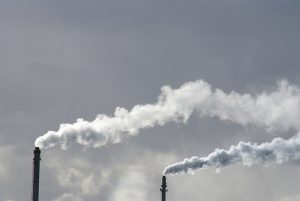Late last October, China’s top economic planning body – the National Development and Reform Commission – instructed the cities of Beijing, Tianjin, Shanghai, Chongqing and Shenzhen, plus Hubei and Guangdong provinces, to get ready to run carbon-trading trials.
These are not China’s first experiments with emissions trading. In fact, the country has of late seen a proliferation of exchanges: according to Chinese newspaper 21st Century Business Herald, by the time of last year’s announcement, many provinces and cities were already setting up their own carbon exchanges, or “energy and environment exchanges” – which in almost all cases include trading of emissions rights. But to date, the platforms up and running are either voluntary or tied into the UN clean development mechanism. Some places, including Chengdu, Ningxia and Xinjiang, are either considering similar exchanges, or planning to host branches of the Shanghai Environment and Energy Exchange, though these tend to mean nothing more than one employee in a single office.
The seven Beijing-backed, mandatory trials kick-started last October represent a new level of ambition, however. Ten months on, how are they progressing? The short answer is: slowly.
China’s local-level development and reform commissions – bodies with responsibility for overall development strategy in any given area – are responsible for the trials. Our interviews with officials working for some of these outfits found that there is no lack of determination to make them work. But the projects are nonetheless beset by problems of varying degrees of magnitude.
Management mechanisms and channels for obtaining the basic data required to make these schemes work have not yet been pinned down. Meanwhile, the prospect of emissions caps– a basic tenet of carbon markets – is prompting anxiety about stalled economic growth, both in developed and undeveloped parts of the country.
One official at the development and reform commission in south China’s Guangdong province summed up his concerns: “There’s no applicable experience, no suitable means of arbitration and no ideal solution.”
Carbon markets in the trial locations are due to start in 2013. As things stand, that target is looking very ambitious.
One authority for carbon, one for energy
The trial carbon markets have all been designed with the assumption that there will be a total emissions cap in place. But China still has no binding caps of this nature. That means the markets may instead need to link to binding energy-efficiency caps, or to guideline caps for energy consumption so as to ensure that the trading has legal status and the market can function.
But even these caps are a challenge as, in most regions, economic output is directly related to energy consumption: a “ceiling” on energy consumption means a “ceiling” on the size of the local economy. It’s an idea that runs counter to the status quo, where GDP growth creates jobs and increases local economic power.
Recent government moves to set a total energy consumption target of 4.1 billion tonnes of coal equivalent have been seen as a mark of China’s growing determination to cut emissions. But this is still only a guiding, rather than binding, target, and refers to the end of the 12th Five Year Plan period – 2015. Caps are unavoidable, but will by no means by easy to implement.
One problem is fragmentation of oversight. Since 1949, Chinese industry has been supervised by the industrial authorities (currently the Ministry of Industry and Information Technology or MIIT) and energy-saving work has traditionally fallen under their remit. Subordinate to the MIIT are local “economy and information technology commissions”, which oversee a band of energy-saving bodies at local level such as energy-saving technology centres. Meanwhile, the local development and reform commissions, also have environment and resources departments.
This set-up has become more complicated as tackling global warming has risen up the agenda. Climate-change offices run by the local development and reform commissions have been upgraded to departments, while carbon-emission reductions have become an integral part of the work of the development and reform commissions.
In some places, such as the southern city of Guangdong and the northern city of Tianjin, management of energy and carbon has been divided between the “economy and information technology commissions” and the “development and reform commissions”. Since carbon caps have appeared on the agenda, coordination has been difficult. This could mean that targets for carbon and energy are out of step, undermining the whole system.
Fears of a carbon curse
The seven trial locations are representative of China’s regional differences. In each case, the key energy-consuming companies or sectors chosen reflect the area’s distinct economic structures and patterns of energy consumption.
Beijing’s carbon market, for example, will focus on large public buildings, heating companies and manufacturing. This approach is similar to that taken by Tokyo, another large and densely-populated city. Guangdong, meanwhile, is targeting the four sectors responsible for the most emissions in its manufacturing-based economy: steel, ceramics, electricity and concrete.
Despite the differences, there are common concerns about the effect on economic growth of carbon trading – in particular, caps. One local official was blunt: “We need economic growth, and that means carbon emission growth.”
Sun Zhenqing heads the green development institute at Tianjin University of Science and Technology. He elaborated on the case of his city: “Tianjin is developing rapidly, with a lot of projects getting under way. Emissions growth will be higher here than in Beijing or Shanghai.” Total emission caps “must not affect investment or economic development”, he said.
Some of the trial locations – the already highly developed areas – have seen economic growth slow and so are “brave” enough to set total emission caps. But some still anticipate major infrastructure construction and hope to avoid strict limits in order to allow a future rise in emissions.
There are also big differences in circumstances within locations. One official, surnamed Lu, who works for Guangdong province’s reform and development commission, explained: “Development in Guangdong is uneven – the economy in the mountainous north of the province is as poor as it gets in China, while the Pearl River Delta economy is China’s most developed.” This presents difficulties for implementing caps and designing workable carbon trading systems, and to an extent reflects the situation in China as a whole.
Zhou Jian, an energy researcher at Beijing’s Tsinghua University, commented that “reform and development leaders are getting better acquainted with carbon trading, but there’s a need for a clearer understanding among the actual participants. The problem is that the authorities aren’t in touch with the people who will actually be doing the trading.” Those “people” are the industrial enterprises who create the emissions and, so far, there has been little effort to include them in the design process. This may mean that they show resistance once the system is up and running. As one official from Tianjin put it, “businesses have a lot of misgivings about the potential for any further energy-saving.”
Given this, the local development and reform commissions face a dilemma: whether to embrace carbon trading as a means to boost low-carbon industries or to try to continue accommodating the carbon-intensive model that has driven GDP growth thus far. The Tianjin official added: “The authorities are positive but cautious – positive about applying market trading, but also cautious as it’s a new thing. Maybe it can spur things on. But it would also be easy to put businesses off.”
One problem this could trigger is “carbon leakage” – where emissions go up in one region as a result of tightened regulations in another. Concerns are particularly acute in Guangdong, a hub of export and processing companies. “Guangdong’s economy is externally orientated. If costs go up, the companies will relocate right away,” said one worried official.
Shanghai, Jiangsu and Zhejiang, which neighbour each other in eastern China, compete on manufacturing costs and have real worries about losing business. In particular, they fear being squeezed out if they implement carbon trading trials while markets next door do not – and this has ramped up the pressure on those setting policy.
As a result, some local officials have complained about a lack of analysis of the impacts of emissions trading, and expressed hopes for “quantifying the costs of carbon trading, and the impact of carbon pricing on the economy and the people.”
Vital ingredients missing
Carbon trading relies on data. In order to set caps and allocate appropriate quotas, you must have comprehensive and reliable data.
So far, that is proving elusive, as a vivid description from the Tianjin official we spoke to suggests: “Top-down calculations and bottom-up calculations don’t match up, nor do the figures from industry associations and those from emission inventories.” This is inevitable when statistics are collected over different scopes, and through different channels.
Data from businesses is not itemised, and – as energy audits are still uncommon – data verification is extremely hard.
Most provinces and cities have energy-saving supervision centres, which oversee the reporting of energy use statistics by high-consuming companies. In Guangdong, energy use is reported quarterly, for example, while in Shanghai it happens monthly.
According to the newspaper Southern Weekend, preparatory meetings for the carbon-trading trials held in June last year failed to provide concrete guidelines on data-gathering techniques for the new projects. Methods for calculating greenhouse-gas emissions at the business and facilities level, coordination of reporting of data, avoiding imposing excess costs on business, the use of third party auditors – all of these still need to be determined.
In the long term, this data base won’t only be useful for carbon trading – improvements made here can feed into other information-gathering efforts, such as greenhouse-gas emission inventories and energy audits. But at the moment, without solid company-level emissions data, there is no basis on which to allocate emission quotas.
Even if they had the necessary figures, the trial locations still lack decent methodology for making allocations. There are concerns that an excessively simple approach could penalise firms that are already performing well by creating a situation where firms with historically high emissions levels get higher quotas – they are allowed to emit more – while their more energy-efficient counterparts are given less room for manoeuvre. Some researchers have advocated using the benchmarking system applied in the European Union’s emissions trading scheme, where quotas are allocated according to a company’s energy efficiency. But to do this requires a lot of basic data on company-level emissions.
Most of the trial locations are trying to win support from businesses for proposed allocation methods. But as this will result in increased costs, progress has been slow. Although local governments have been given room to experiment, the lack of a firm foundation on which to build has left officials at a loss and under pressure.
One local development and reform official said: “The reason why we have ideas about carbon trading but no actual practice is because there’s no legal basis, no methods for running it. Managing carbon trading should be a legislative issue, decided by the People’s Congress, with the design of calculation methods done at the top level.”
Another official named Lin, from Guangdong, said that “Overlap between central and local government on carbon trading design is a big problem. Just designating trial locations and letting local governments work it out for themselves is wasteful. With some of the work, including reporting of company emissions, it would be better if one person took the lead. Central and local research bodies should work together on the basics.”
Lessons from elsewhere offer scant comfort. Even in the European Union and California, where there was better data-gathering and coordination with existing policy tools, it took several years to get carbon trading off the ground. China’s trial carbon markets will struggle to start on time.
Liu Shuang is consultant to Low Carbon Development Paths Program, The Energy Foundation Beijing office. Xu Nan is managing editor in chinadialogue’s Beijing office.
This article is published as part of the Green Growth project, a collaboration between chinadialogue and The Energy Foundation.
Homepage image by freefotouk






